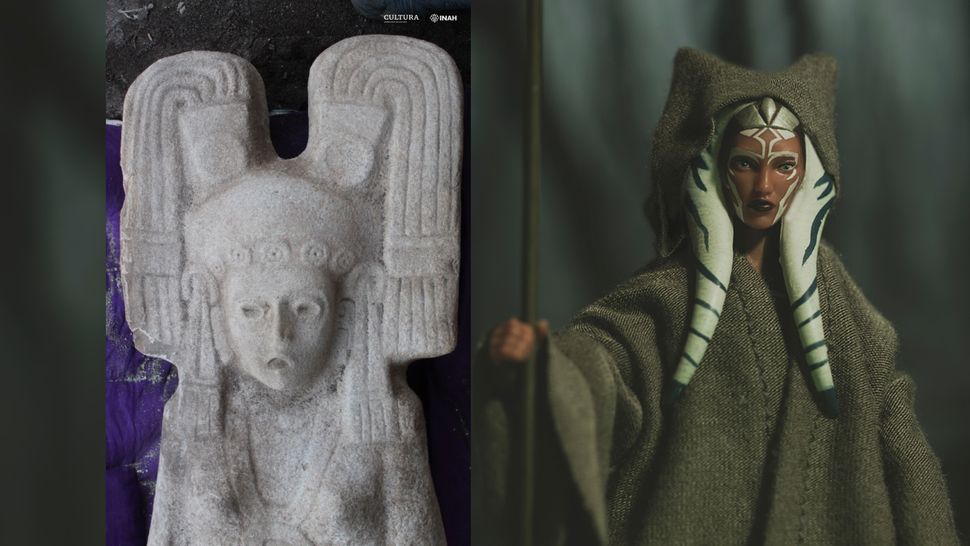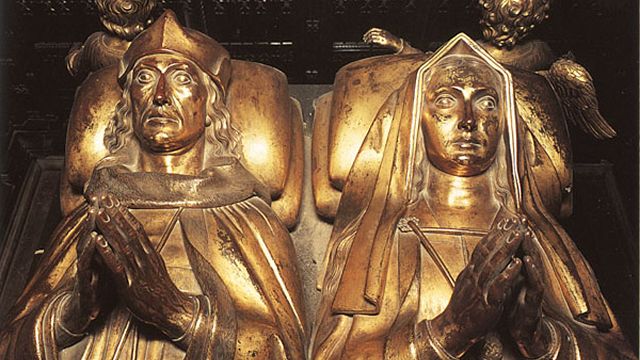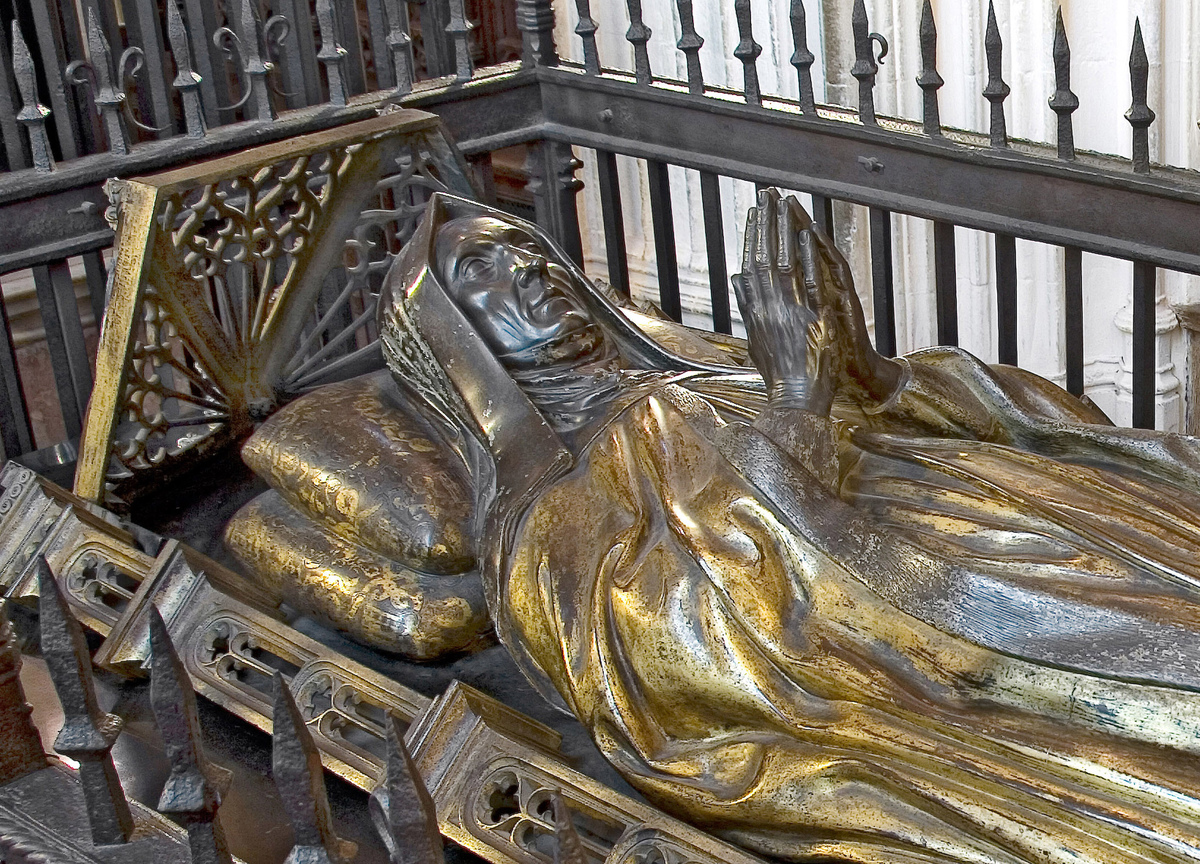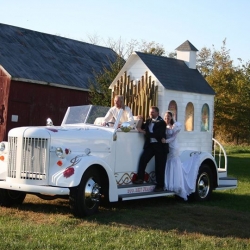Anthropology
Related: About this forumStatue of mysterious woman with 'Star Wars'-like headdress found in Mexico
By Laura Geggel - Associate Editor 21 hours ago
The 6.5-foot-tall statue was found in a citrus orchard.

Farmers found the 500-year-old statue of mysterious woman (left), who has a headdress that looks like the head ornamentation of "Star Wars" former Jedi apprentice Ahsoka Tano (right), whose Hasbro action figure is shown here.
(Image: © María Eugenia Maldonado Vite; Shutterstock)
A 500-year-old statue of a mysterious woman wearing a large, "Star Wars"-like headdress has been discovered in central Mexico, according to Mexico's National Institute of Anthropology and History (INAH).
The 6.5-foot-tall (2 meters) limestone statue depicts a young woman dressed in elaborate clothes and jewelry, including a circular pendant, known as an "oyohualli," on a thick necklace; tassel-like earrings; and a headdress that rivals the head ornamentation of "Star Wars" Ahsoka Tano, a former Jedi apprentice turned warrior in the sci-fi series.
Just like Ahsoka Tano, this mysterious woman may have played a key role in her time. The statue likely depicts an elite woman, "possibly a ruler, because of her posture and attire, rather than a deity," María Eugenia Maldonado Vite, an archaeologist at the INAH Veracruz Center who is leading the excavation, said in a statement (translated from Spanish).
Local farmers found the figure in a citrus field in the town of Hidalgo Amajac, in the Mexican state of Veracruz, on Jan. 1. The statue likely dates to the late Postclassic period (1450-1521) and has features reminiscent of the Huastec culture, a group of people on the Mexican Gulf Coast that lived in a pre-Columbian crossroads for cultures, arts and trade. The discovery of what was likely an important female ruler "confirm[s] the active participation of ruling women in the Huastec social and political structure," Alejandra Frausto Guerrero, the Mexican secretary of culture, said in the statement.
More:
https://www.livescience.com/statue-woman-headdress-mexico.html
Judi Lynn
(163,980 posts)The sculpture may depict an elite ruler or a fusion of a goddess and a female leader

On New Year's Day, farmers in Mexico uncovered a sculpture dated to between roughly 1450 and 1521 A.D. (INAH)
By Isis Davis-Marks
SMITHSONIANMAG.COM
JANUARY 14, 2021 7:30AM
On New Year’s Day, farmers in the Huasteca region of Mexico’s Gulf Coast were ploughing soil in a citrus grove when they discovered something strange. After hitting an object they initially assumed was a rock, the group shoveled deeper, ultimately unearthing a six-foot-tall limestone statue of a Mesoamerican woman, according to a statement from the country’s National Institute of Anthropology and History (INAH).
As the Associated Press reports, the statue likely dates to between roughly 1450 and 1521 A.D. After examining the artifact, INAH experts determined that it was the first of its kind to be found in the region.
Locals excavated the figurine between the pre-Hispanic Haustec ruins of El Tajín and the Aztec city of Tuxpan, in an area not previously identified as an archaeological site. Given the absence of similar historical objects in the grove, the team suggests the sculpture, which appears to shows Aztec influences, may have been moved there from its original location.
In the statement, as translated by the AP, archaeologist María Eugenia Maldonado Vite says the work could depict “a ruler, based on her posture and attire, [rather] than a goddess.”
Maldonado adds that she could also be “a late fusion of the Teem goddesses with the representations of women of high social status or politician in the Huasteca.”
Per the statement, the supine subject wears an ornate headdress, a necklace with a circular adornment known as an oyohualli, a long shirt and a skirt that grazes her ankles. (As Live Science’s Laura Geggel points out, the headdress is reminiscent of one worn by Star Wars character Ahsoka Tano.)

The statue may depict an elite ruler or a fusion of a goddess and ruler. (INAH)
More:
https://www.smithsonianmag.com/smart-news/archaeologists-unearth-rare-female-statue-citrus-grove-180976746/
wnylib
(25,344 posts)below the part that shoots up and cascades down reminds me of the headresses of European women of the same time period, particularly English and Spanish royalty and nobility. The date range for the statue is given as "likely" dates, but not confirmed. I wonder if the woman's headress was influenced by Spanish fashions after Spaniards arrived in Mexico. They conquered and enslaved the lower classes, but sometimes married Native women of high status after converting them.
Edit to add link
Here are some Medieval European women's headdresses.
http://rosaliegilbert.com/headdresses.html
Judi Lynn
(163,980 posts)I have seen a couple of the horned headdress over the years, in paintings, but the others are absolutely unfamiliar to me. How very interesting.
It's going to take a while for these images to sink in. I need to get a sense of what they were and how they looked on the people. Can't imagine what their societies were like at the same time where something like that would seem appropriate! Amazing.
I need to go looking for more on them. They raise so many questions!
Thank you, wnylb. ![]()
wnylib
(25,344 posts)between those European headdresses and the one on the Mexican statue. But the statue's headdress did remind me of not just the horned European headdresses, but of the ones without the horns that have a cap on the head that lets forhead hair be seen, with cloth hanging on each side of the head. There's one of those at the link I posted.
The time estimate for the statue got my imagination going on "what if?" since it does overlap a bit with the early Spanish presence in Mexico.
For peculiar headgear of the Middle Ages and very early modern times in Europe, have you seen portraits of England's Elizabeth of York, or Henry VII's mother, Margaret? They wore the "gabelled hood" type of headpiece. Looks like someone built a chapel on their heads.
Judi Lynn
(163,980 posts)
Elizabeth of York

Effigies of Elizabeth of York and King Henry VII in the Lady Chapel of Westminster Abbey

Margaret Beaufort

Very superstitious bunch of people! Looks as if they imagined they'd better get the "womenfolk" all tangled up in religion so they would be less tempted to run amock and act up!
Definite resemblance to portable chapels on their domes!
If they hadn't been likely to be afraid of machines, they would have adored these mobile chapels:


~ ~ ~
Again, thanks for activating our interest in learning more about the elaborate, and intriguing headdresses from Middle Ages, (and maybe earlier, too?) Europe. This would be a fascinating subject to dive into when a person has some fun time to go looking! (I just remembered some of the European madrigals were very eerie, mysterious, too.)
wnylib
(25,344 posts)Last edited Thu Jan 21, 2021, 12:48 AM - Edit history (2)
to be very pious and "pure." Margaret Beaufort was especially pious to the point of being what we would call prudish and a prig. But she was respected for it by many.
In their defense, many women of the period found refuge and a degree of autonomy in religious devotion at a time when laws, customs, and religion, were extremely patriarchical. When women (even married ones like Margaret) declared celibacy in religious vows, they got relief and protection from endless childbearing, sex on demand, and subjugation. As devoutly religious women, they could indulge in learning, too.
Margaret was very ambitious, but limited by gender in what she could accomplish, so she threw herself into promoting her son's candidacy to be king during the Wars of the Roses, and once he was crowned, was second only to him in power at court.
I've seen some English headgear that was even more like a chapel, but can't recall now the names of the women. Their gabelled headpieces were shorter and stiffer. They almost look like they were made of wood.
wnylib
(25,344 posts)was one whose headgear looks stiffer in her portraits. There are plenty of portraits of her online, but I couldn't get a link to work.
I got interested in these women and their time period through historical narratives that are a cross between a biography and a novel.
Judi Lynn
(163,980 posts)
They wanted to make sure no one could confuse royalty with mere commoners, apparently.
It's always interesting to study costuming in period films, watching carefully to determine how much research the people who do the costumes have actually done, to accurately represent the periods.
It is deeply interesting. One appreciates the people who take their occupations seriously.
P.S.: I feel obligation to mention, although everyone knows, what an evil monster Henry III was. It didn't seem right to not mention it!